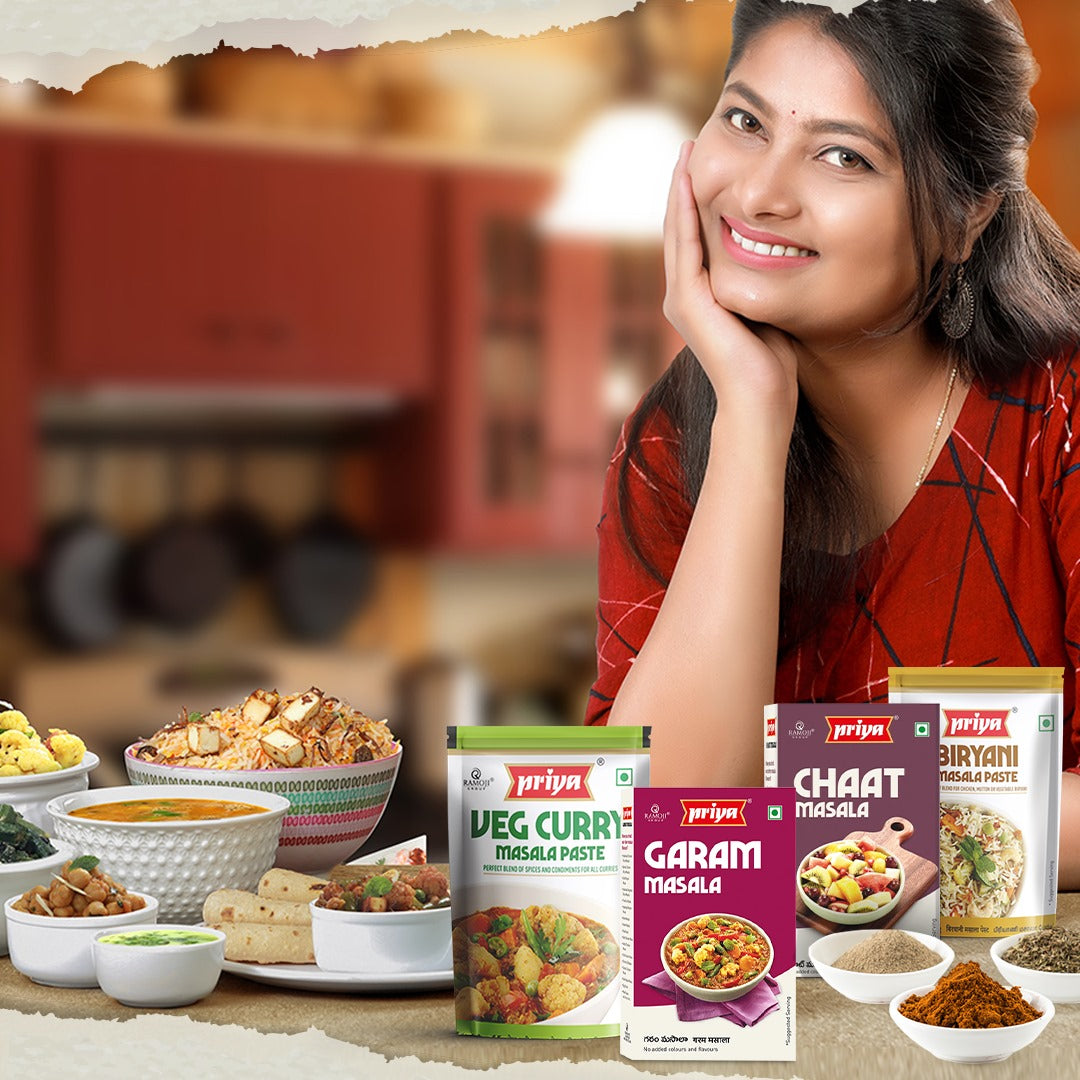
What's Life Without Some Masala???
Indian cuisine is celebrated for its rich and diverse flavours, and at the heart of this culinary tradition lies the exquisite array of masala powders and pastes (spice blends) that have been handed down through generations. These concoctions are an integral part of Indian cooking, adding depth, aroma, and a burst of taste to the dishes.
In this blog, we will set sail on the sea of masala powders and pastes from the Telugu region, exploring their history, ingredients, and their role in creating the distinctive taste of Andhra and Telangana cuisines.
The Historical Perspective
The ancient Telugu region played home to the Satavahanas, Ikshvakus, Pallavas, Cholas and Chalukyas followed by rulers of the Islamic dynasties of North India. The Delhi Sulatanate, the Qutb Shahis and the Mughals introduced Arabic, Turkish and Persian elements to its cultural fabric. The process culminated in the kingdom of the Nizams of Hyderabad in the 18th century who developed a multifaceted and sophisticated aristocratic tradition. The region's culinary history, influenced by various dynasties and empires, is thus a unique blend of flavours.
Trade routes that crisscrossed the region introduced Telugu cuisine to a variety of spices from different parts of the world. The result was the development of complex masalas and pastes that have become an intrinsic part of the region’s culture and heritage.
Key Ingredients
The spices and herbs used in masalas are not just chosen for their taste and the colour they impart, but also for their health benefits.
Red Chillies: Telugu cuisine is renowned for its fiery heat, and red chillies play a pivotal role in achieving this. The Guntur Sannam, Byadgi, and Kashmiri chillies are the more commonly used varieties. These chillies not only add spiciness but also contribute to the vibrant red colour of many Telugu dishes. Capsaicin, the active component in red chillies has anti-inflammatory properties that help in reducing pain and swelling.
Tamarind: Tamarind is another essential ingredient in Telugu masalas. Its tangy and slightly sweet flavour is used to balance the heat of the chillies and provide a distinctive sourness to dishes like sambar and pulihora (tamarind rice). Tamarind has been seen to protect the liver, as it contains antioxidants called procyanidins which counter free radical damage to the liver.
Mustard Seeds: Mustard seeds, particularly black mustard seeds, are commonly used for tempering in Telugu cuisine. They add a nutty and earthy flavour to many dishes. According to a study published in the journal Human & Experimental Toxicology, mustard seeds may have chemopreventive potential and may protect against the effect of carcinogens.
Fenugreek Seeds: Fenugreek seeds are used in many spice blends. They impart a slightly bitter taste and are often roasted before being ground to reduce their bitterness and enhance their aroma. Fenugreek is often recommended by dieticians and diabeticians for blood sugar control and to help prevent diabetes because it seems to improve insulin sensitivity.
Curry Leaves: Fresh curry leaves are a hallmark of Telugu cooking. They infuse dishes with a unique, citrusy aroma and are used for tempering in many recipes. Research studies show that consuming curry leaves may help reduce high cholesterol and triglyceride levels.
Popular Masala Powders & Pastes
Masalas are not just ingredients; they are the heart and soul of a vibrant and dynamic culinary tradition shared by people young and old with equal love and passion. They embody the spirit of hospitality and celebration that is deeply rooted in Indian society. Here are some popular masala powders that every Indian kitchen features.
Garam Masala: This fiery spice blend is the cornerstone of Indian cuisine, and finds space in Telugu kitchens too. It typically includes coriander seeds, red chillies, cumin seeds, black pepper, bay leaf, cardamom and more. It can be added to any dish to instantly enhance its aroma and taste.
Karam Podi: This dry chutney powder is a staple in Telugu households. Made with roasted lentils, red chillies, and spices, it is sprinkled on rice and ghee or used as a dip for idlis and dosas.
Pulihora Paste: Pulihora, a tangy tamarind rice dish, is incomplete without its special paste. This blend usually consists of tamarind, black gram, Bengal gram, mustard seeds, curry leaves and red chillies, all roasted and ground together.
Sambar Powder: Sambar, a South Indian stew, relies on a complex spice blend for its flavour. Telugu-style sambar powder includes a mix of red chillies, coriander seeds, cumin seeds, fenugreek seeds, splits of Bengal, red and black gram, and asafoetida.
Priya Foods, has a vast repertoire of Masala powders, podi and pastes that make life easy and tasty in a jiffy. From vegetarian options like Sambar and Rasam powders to non-vegetarian ones such as Chicken Biryani Masala and Mutton Rogan Josh Masala; from snack options such as Noodles Masala and Pav Bhaji Masala to elaborate ones like Bisi Bele Bhaath Masala and Gutti Vankaaya Kura Masala, Priya has close to 50 masala powders and pastes that can make any kitchen a veritable treasure trove of Indian flavours.
The rich heritage of masalas is a testament to India’s love for bold and complex flavours. These spice blends not only make the cuisine unique but also reflect the cultural, historical, and social aspects of the people. As you relish the fiery taste of Andhra Chicken Curry or the tangy goodness of Pulihora, remember that behind these flavours lies a profound connection to the past, a celebration of the present, and a promise of a flavourful future.
Share


